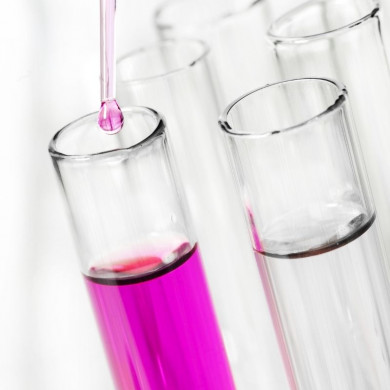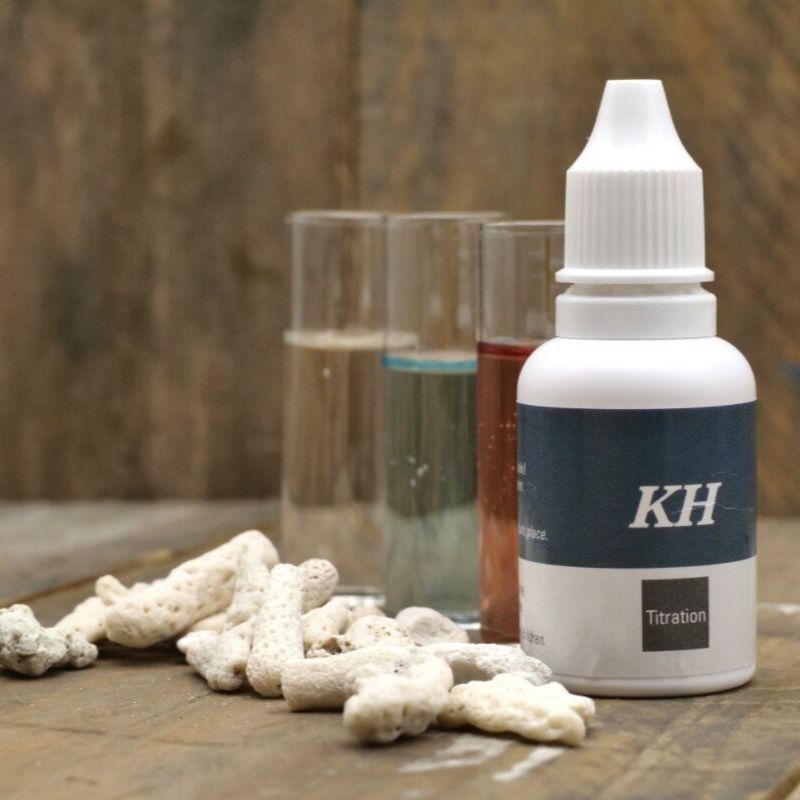Measuring water values in reef tanks: How to use titrimetric tests

As reef hobbyist, you will not be able to avoid water analysis. But don't worry - you don't have to be a chemist to determine important values such as alkalinity, phosphate and nitrate. With commercially available test kits you can quickly and easily determine most of the parameters.
Many water values in marine aquaristics are determined with the help of colorimetric and/or titrimetric tests (better known as titration tests). These tests are easy to use and can also be utilized by non-chemists. However, there are a few things to keep in mind. We have compiled important tips for you.
Titration test - what is it?
The functionality of a titration test is based on the fact that the concentration measurement of a substance is coupled to a color reaction and thus becomes visible. The intensity of the color or the moment of the color change can provide information about the amount of the tested substance.

In the alkalinity test, the concentration is determined by the number of drops that must be added until the color changes from blue to orange.
What to look for when buying a titration test?
The water test should in any case be suitable for seawater. Also consider your aquaristic goals when making a purchase decision. Are there only robust soft corals, zoanthus and lots of fish in your aquarium? In this case, a test with a high measuring range and lower accuracy may be sufficient. On the other hand, do you keep more demanding stony corals and your nutritient values are generally very low? Then choose a test in the low measuring range with a high level of accuracy (e.g. Pro versions).
7 tips for using titration tests
#1 Check your test
Before you even start, check the best-before date (BBD) of your water test. In fact, the reagents in the test kit can expire and become unusable. If the expiration date has already been exceeded for a very long time, we recommend that you discard the test. Alternatively, or after only a short overrun, it makes sense to check the water test with a standard solution and, if necessary, to determine a correction factor. In this way you can use the tests beyond the expiration date.
Generally store your water tests in a cool, dry place to extend shelf life.
#2 Be a bit meticulous and accurate in water analysis
In order for the test to show the most accurate measurement results, it is important that you:
- follow the instructions carefully
- keep waiting times
- work cleanly
- Read the sample volume on the syringe and not on the cuvette
- dose powdered reagents with level measuring spoons instead of heaped ones
- do not hold the dropper bottles at an angle but upright so that the droplet size remains constant
- drip the reagents directly into the sample and do not allow them to run along the wall
- if you have several plastic syringes in a test kit, label them accordingly so that they cannot be mixed up
.jpg)
Only those who work cleanly and precisely can expect exact measurement results.
# 3 Pay attention to the timing of the measurement
Always test your water values at the same time of day. This is particularly important with the pH value, as this parameter changes over the course of the day.
Obviously, you should not take sample water immediately after feeding. This would falsify the results.
Allow yourself some rest and time for your measurements. Hectic and stress can quickly lead to measurement errors.
#4 Improve your color perception
It can sometimes be difficult to correctly assign the color of the sample on the color scale. What can help here is first of all a decent source of light. Some tests also contain a so-called comparator block. A sample cell and a comparison cell (sample only, without reagents) are placed in this. The comparison cuvette is placed over the color scale in such a way that the color impression of the sample cuvette is imitated and the comparison is simplified in this way.
# 5 Use a reference solution
A reference or standard solution contains precisely set concentrations of a substance such as phosphate, KH or nitrate. By testing with a standard, you check the functionality and accuracy of a test. It is particularly useful after long periods of storage and when unexpected measured values are present. If there are deviations from the target value, a correction factor can be determined using the reference solution.
You can check the functionality and accuracy of your water tests with reference solutions such as the NP standard from Tropic Marin.
# 6 What to do if the concentration is outside the measuring range?
In this case you can either double the sample amount or dilute it with osmosis water. The result must then be divided by 2 or the dilution factor.
Theoretical example: You measure your nitrate value and notice that the pink color is even darker than the color of the last field on your color scale. Your color scale ends at 20 mg/l. So your nitrate value is higher. You repeat the test. Instead of 5 ml of sample water, you fill the cuvette with 2.5 ml of sample + 2.5 ml of osmosis water. Your dilution factor (amount of starting solution: amount of final solution) is 0.5. You can now read 15 mg/l on the color scale. Finally, you divide this value by 0.5 and thus know that your actual nitrate value in the tank is 30 mg/l.
# 7 After the measurement is before the measurement
Be careful with your equipment and rinse the cuvettes thoroughly (preferably with osmosis water) and let them dry. By the way, it never hurts to always have a spare cuvette at hand. The small things can quickly fall down and break.
.JPG)